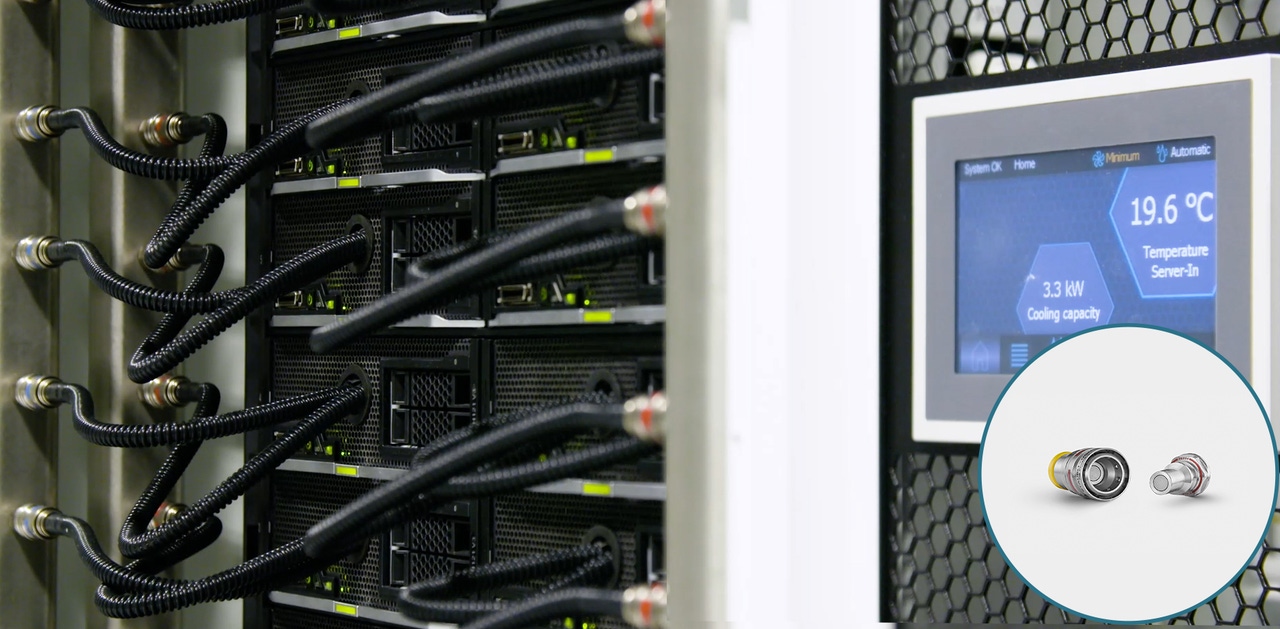
Insight and analysis on the data center space from industry thought leaders.
The AI Boom, the Rise of Liquid Cooling, and the Universal Quick DisconnectThe AI Boom, the Rise of Liquid Cooling, and the Universal Quick Disconnect
With Artificial Intelligence heating up data centers, the adoption of liquid cooling is on the rise, highlighting the necessity for standardized solutions.
April 1, 2024

Sponsored by Staubli
The Problem with Artificial Intelligence
AI applications, such as machine learning, deep learning, and neural networks, require massive computational power. As the complexity and compute-intensity of AI applications continues to surge, so does the heat produced by these high-performance systems. Traditional air-cooling methods are struggling to dissipate the heat efficiently, leading to higher energy consumption, reduced performance, and increased operational costs.
In response to this escalating challenge, the industry is witnessing a shift toward liquid cooling solutions, which promise greater efficiency and heat dissipation capabilities.
Advantages of Liquid Cooling in AI System Management
By using liquid to absorb and carry away heat, data centers can achieve higher cooling capacities, better temperature control, and reduce energy consumption compared to traditional air-cooling methods (an important energy consumer). Liquid cooling also enables higher power densities, allowing data centers to accommodate more powerful AI hardware in a smaller footprint and to become modular (MDC).
The role of Universal Quick Disconnects in Liquid Cooling System Standardization
Amid this transformation, the significance of standardization becomes paramount. A universal approach to the design and implementation of cooling systems ensures interoperability, scalability, and futureproofing, reducing complexity for data center operators.
Companies like Stäubli who’ve been creating reliable liquid cooling connections for decades, are now developing standardized technologies to facilitate the widespread adoption of liquid cooling.
Stäubli UQD (Universal Quick Disconnect) comes to mind as a critical innovation within this landscape, meticulously crafted to seamlessly integrate into liquid cooling infrastructures. Their UQD's design not only enhances operational safety and efficiency but also aligns with the standardization efforts propelled by key industry consortiums such as the Open Compute Project (OCP).
This harmonization of technology is crucial in facilitating the widespread adoption of liquid cooling, thereby empowering data centers and supercomputers to meet the thermal demands of next-generation AI applications while adhering to a common set of industry practices.
Stäubli's UQD exemplifies one of the many advancements aimed at improving connectivity and fluid exchange efficiency within complex cooling networks. Some interesting features from Stäubli’s technology include:
A visual marking system for circuit identification, simplifying maintenance and troubleshooting.
An automatic connection, which easily connects in tight spaces like inside the blade
Push lock technology that ensures a secure and reliable connection
Interface options, including shutters to further enhance safety and performance
Innovations like these play a crucial role in the advancement of data centers and high-performance computing, two sectors that demand unwavering reliability and cannot afford any failures. It is essential to safeguard your equipment against leaks and other harmful factors to maintain operational integrity. It’s important to implement quick disconnect systems like Stäubli's that are specifically designed to minimize fluid loss while providing superior flow efficiency, ensuring your infrastructure is protected and performs optimally.
Looking forward
To embrace the future of computing and effectively tackle the challenges presented by AI-driven workloads, data centers need to adopt standardized solutions, such as Universal Quick Disconnects (UQD). The integration of quality UQD’s in liquid cooling systems not only enables data centers and supercomputers to achieve outstanding performance and reliability but also helps in significantly reducing operational costs. Moreover, the adoption of such solutions promotes increased scalability and leads to a substantial decrease in energy consumption, paving the way for a more efficient and sustainable technological landscape.
Read more about:
North AmericaAbout the Author
You May Also Like







